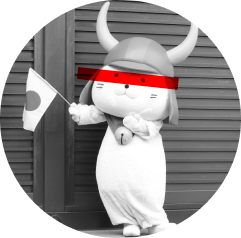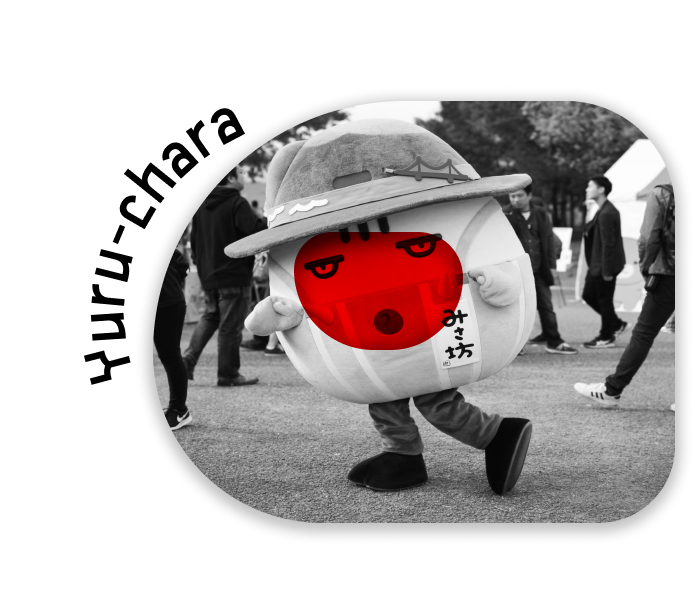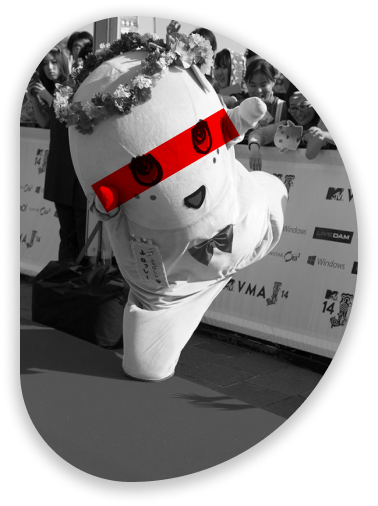


is a Japanese term for a category of mascot characters; usually created to promote a place or region, event, organisation or business.
They are characterized by their kawaii (cute) and unsophisticated designs, often incorporating motifs that represent local culture, history or produce.

Taking his name and form from the character 熊 (kuma), meaning “bear,” Kumamon was created in 2010 in a bid to attract tourism to the prefecture when the Kyūshū Shinkansen service was extended to Kumamoto in 2011. By no means conventionally adorable, his intense, staring eyes have prompted some to dub him kowa-kawa, or “scary-cute.”


This chick-like character of indeterminate gender wears a crown intended to symbolize the nearby Kurushima-Kaikyō Bridge and has a fine Imabari towel wrapped around its waist.
Barysan is described as being kind, yet sometimes overly enthusiastic when it comes to extolling the virtues of its home.
Talk of a pleasant disposition, however, is undermined somewhat by Barysan’s cannibalistic tendencies (a favorite dish is local specialty yakitori), and signature baryattack, which has been used on TV to upend rival mascot Kumamon, along with various other human celebrities.
A rambunctious young samurai from the town at the foot of Sano Castle (abandoned in 1615).
In his earnest desire to promote his locale, Sanomaru wears a Sano ramen (the local specialty) bowl instead of a conical sedge hat, with a noodle fringe peeping forth from beneath the brim, and two potato tempura swords thrust into the belt of his pleated hakama.



After twice placing third in the Grand Prix, Gunma-chan finally finished top of the pile at this year’s event, with possible astrological reasons:
The characters used to write “Gunma” are 群 (gun, herd) and 馬 (ma, horse)—hence Gunma-chan’s equine physique—and, conceivably, his triumph in the year of the horse.
Originally unveiled in 1994 as the mascot of a disability sports event, Gunma-chan received his present appellation in 2008, is eternally seven years old, and has the ability to transform his appearance (which tends to mean his costume, which is still pretty impressive for a pony) to suit his particular promotional responsibilities.


The Murakami Haruki of the Yuru Kyara Grand Prix, Funassyi—a shrieking, leaping, headbanging, androgynous pear—has yet to even feature at the competition, despite a popularity and earning power that outstrips many of the other mascots combined.
Indeed, Funassyi is not actually the official representative of Funabashi (that accolade goes to bespectacled, kimono-clad Funaemon).
Created by an anonymous independent designer and initially gaining notoriety through madcap videos posted on a dedicated YouTube channel, Funassyi has become a standard-bearer for a recent wave of “indie” mascots.

